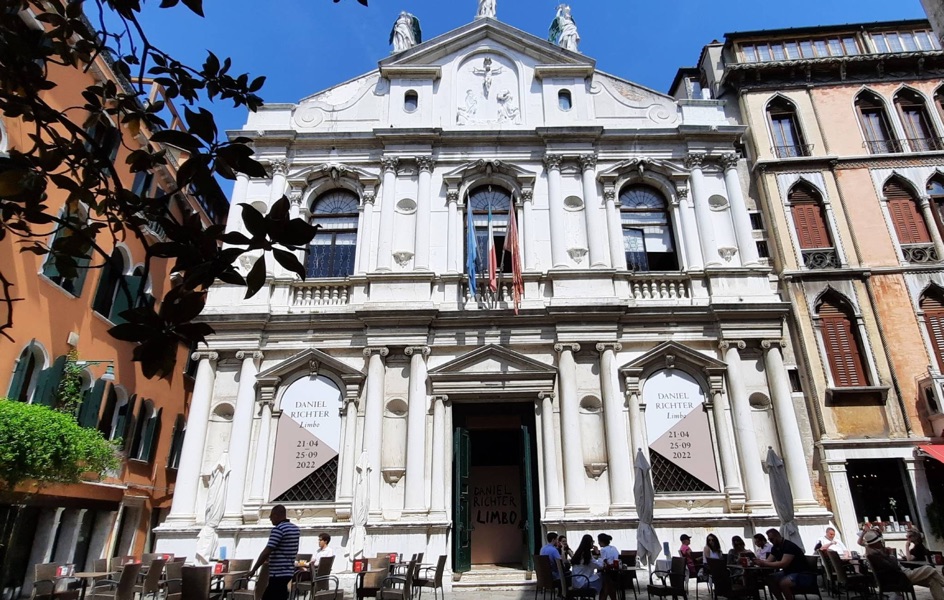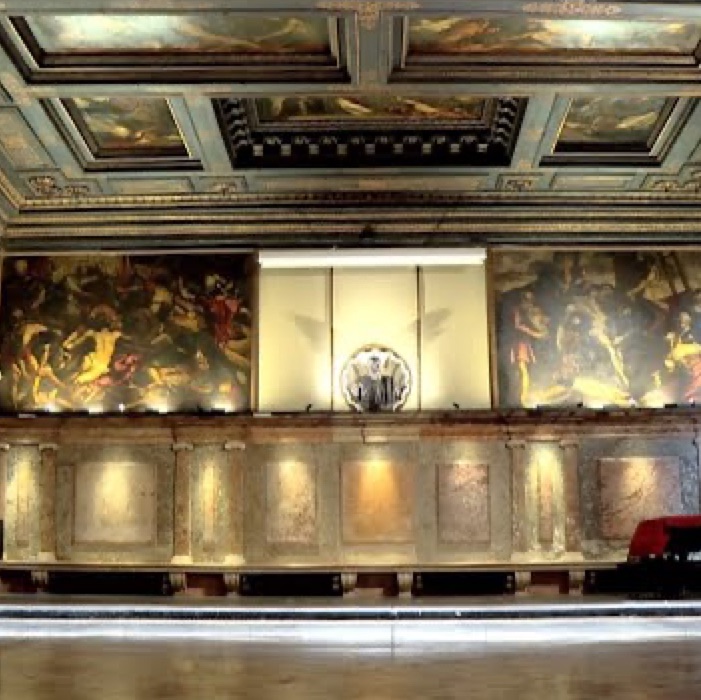The marble reredos of Ateneo Veneto
Common project of all International Private Committees
Alvise Zorzi, heir to an ancient Venetian family, was the first chairman of the International Private Committees for the Safeguarding of Venice (COMPRIVE), remaining in office for twenty-four years, until 2010. An outstanding figure on the Italian cultural scene and in Venice in particular, he was Director of Rai's cultural programmes, Vice-President of the European Broadcasting Union, and Secretary General of the "Prix Italia"; he was also a member of UNESCO's Advisory Committee for Venice and Chairman for the Publication of Sources for the History of Venice. He is considered the first modern populariser of the history of the city, publishing twenty-six titles. He died in Rome in 2014. When he stepped down as chairman of the Committees, in his honour all the members of COMPRIVE- including the Swiss Pro Venezia Foundation, of course– participated in the restoration of the Ateneo's marble reredos.
Established in 1812, the Ateneo Veneto is the oldest cultural institute in Venice and aims to collaborate on the development and dissemination of sciences, humanities, and the arts in all their manifestations, focusing especially on anything related to Venice. Among other illustrious names, its active members have included Niccolò Tommaseo and Daniele Manin, who led the riots of 1848, as well as Alessandro Manzoni, Antonio Fogazzaro, Diego Valeri, Albino Luciani, and Carlo Rubbia. Its headquarters -on the side of the Teatro La Fenice- are located in the ancient School of San Fantin, formerly the School of the "Picai", that is, of the "hanged men", since the school’s main duty was to give comfort to those sentenced to death. The building was erected in the last decade of the sixteenth century and is the work of Antonio and Tommaso Contini, architects originally from Besso (Lugano), and Alessandro Vittoria. On the ground floor is the Aula Magna, the main room of the institute, which housed the School's chapel; the precious furnishings include the marble reredos that were the object of the restoration, that is, the cladding of the Aula walls made from polychrome marble (Verona red and Carrara marble) and lumachella marble. The reredos are original from the ancient School and can therefore be dated at least to the end of the sixteenth century, when the Aula took on its definitive appearance, when the ceiling by Tintoretto was removed and replaced with the cycle of Purgatory by Palma the Younger.
The restored work was returned to the Ateneo Veneto for the bicentenary of its foundation in 2012.


